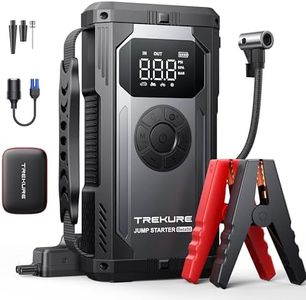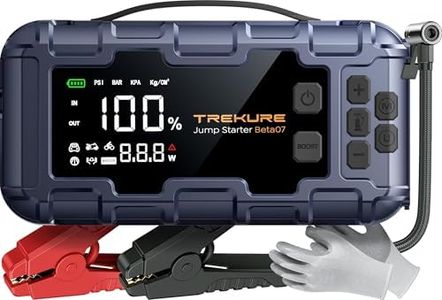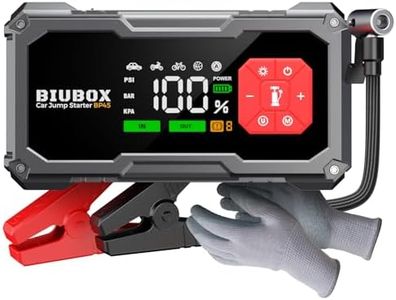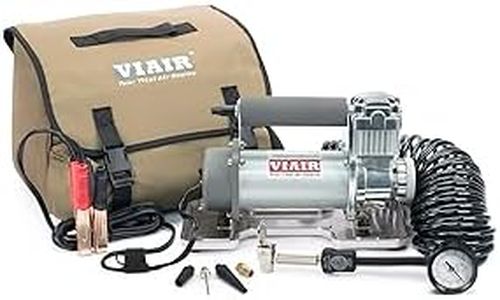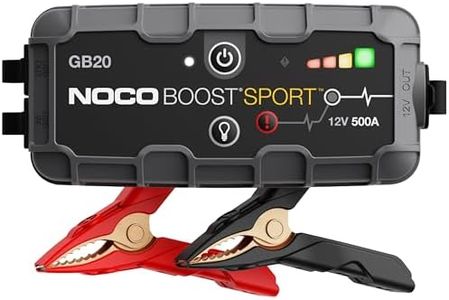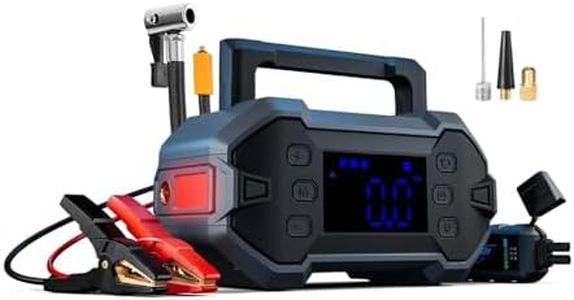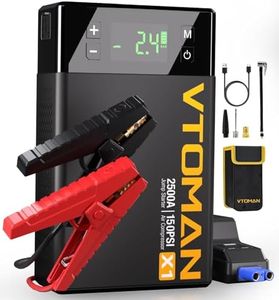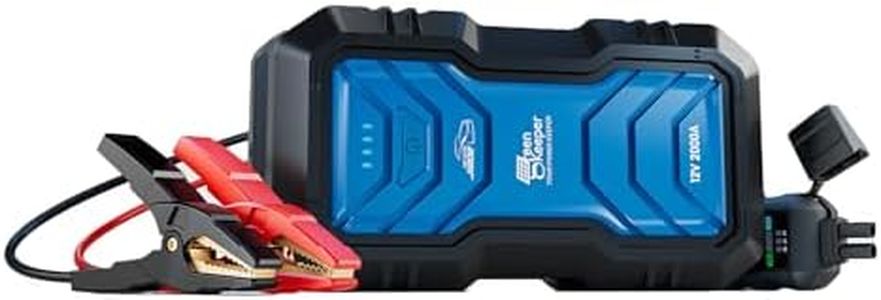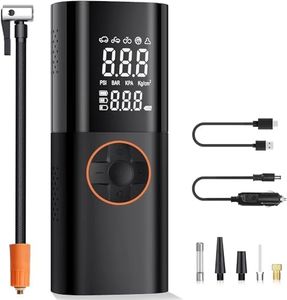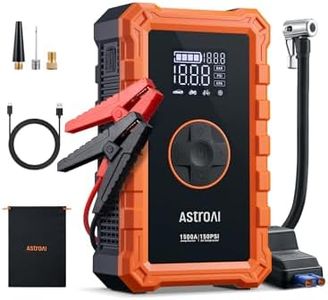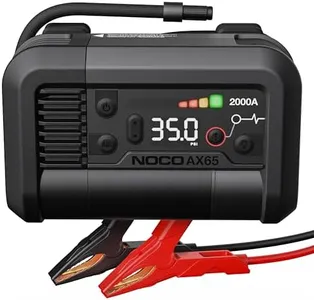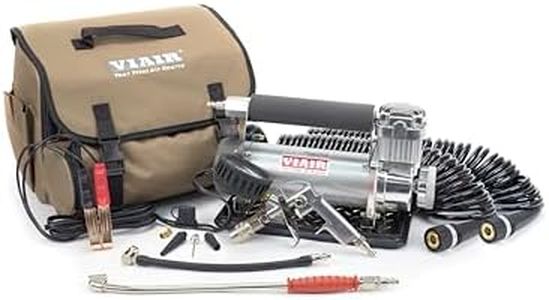We Use CookiesWe use cookies to enhance the security, performance,
functionality and for analytical and promotional activities. By continuing to browse this site you
are agreeing to our privacy policy
10 Best Air Compressor And Jump Starter
From leading brands and best sellers available on the web.Buying Guide for the Best Air Compressor And Jump Starter
Shopping for an air compressor and jump starter combo can be a smart move if you want an all-in-one tool for both inflating tires and jump-starting your vehicle. These devices are especially handy for drivers who want to be prepared for emergencies without carrying multiple gadgets. To choose the right one, it’s vital to understand the main features and specifications, as these will determine how useful and reliable the unit will be in different situations. Your main focus should be matching the specifications to your typical needs—think about the type of vehicle you drive, how often you might need it, and what other inflating or charging jobs you might use it for.Jump Starting Power (Peak Amps/Cranking Amps)Jump starting power is usually given in terms of peak amps or cranking amps. This measures how much power the unit can deliver to start a vehicle. Higher numbers mean it can handle larger engines, like those in trucks or SUVs, while lower numbers are suitable for smaller cars or motorcycles. If you drive a small to mid-sized car, a moderate amp rating can be enough, but if you have a large vehicle or want to help others, go for higher values.
Compressor Maximum Pressure (PSI)The compressor’s peak pressure, measured in PSI (pounds per square inch), tells you how much air the device can push into your tires or other inflatables. For car and bike tires, a compressor with a maximum pressure of 100-150 PSI covers almost all needs, while lower PSI devices are fine for smaller items like sports balls. Make sure to choose a compressor with enough PSI for your tire type and size.
Battery CapacityBattery capacity is often given in amp-hours (Ah) or milliamp-hours (mAh). This represents how much energy the unit can store; higher capacities allow more jumps or uses between charges. For occasional use, a moderate capacity suffices, but if you intend to help multiple vehicles or use the compressor frequently, look for a higher capacity so you don't have to recharge as often.
Portability and SizePortability refers to how easy it is to carry and store the device. Smaller, lighter units are easier to transport but may offer less power, while larger ones tend to be heavier but provide more robust features and higher capacities. Think about where you’ll keep it—if space is tight in your car, choose a compact model, but if storage isn’t an issue and you want more power, a bigger one might be more suitable.
Additional FeaturesSome units come with extra features like built-in lights, USB ports for charging devices, or multiple nozzles for inflating different items. These can add convenience and versatility. Decide which extras will actually be useful for you based on your lifestyle—if you drive at night, a flashlight feature could be valuable, while USB ports help in keeping gadgets charged during emergencies.
Ease of Use and Safety FeaturesLook for features that make operation easy and safe, such as clear controls, automatic shutoff, reverse polarity protection, and easy-to-read pressure gauges. Safety features are important especially if you’re not experienced with jump starting or using air compressors—these can help prevent mistakes and damage to your vehicle.
